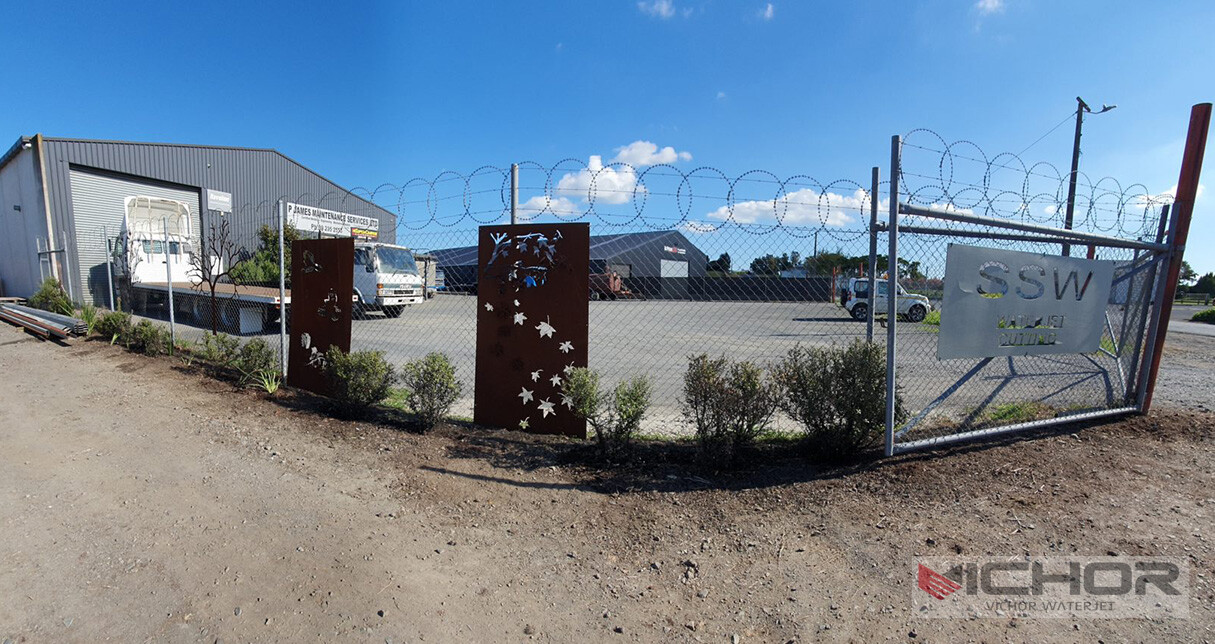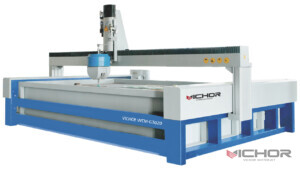
Small Waterjet Table: 5 Key Benefits & Applications for Compact Shops
In the realm of precision cutting, waterjet technology reigns supreme for its ability to slice through virtually any material without heat-affected zones or toxic fumes. While massive industrial systems dominate large-scale manufacturing, the small waterjet table has emerged as a game-changer for workshops, labs, prototyping studios, and small to medium-sized enterprises (SMEs). This compact powerhouse brings the unparalleled versatility of abrasive waterjet cutting within reach, offering precision, flexibility, and efficiency without demanding a factory-sized footprint or budget. Let’s explore five critical aspects that make the small waterjet table an indispensable tool for modern, agile fabrication.
1. Defining the Compact Powerhouse: What Makes a Waterjet Table “Small”?
The term “small waterjet table” typically refers to systems designed for space-constrained environments and lower-volume production runs compared to their industrial counterparts. Key characteristics define this category:
Table Size: Cutting beds usually range from 2′ x 2′ (0.6m x 0.6m) up to 5′ x 10′ (1.5m x 3m), though 4′ x 4′ (1.2m x 1.2m) and 4′ x 8′ (1.2m x 2.4m) are very common sweet spots. This contrasts sharply with industrial tables that can span 10′ x 20′ (3m x 6m) or larger.
Pump Power: Small tables often utilize intensifier pumps with lower horsepower ratings (e.g., 30 HP, 40 HP, 50 HP) compared to the 60 HP, 100 HP, or even higher pumps on large systems. This translates to lower operating pressures (though still typically 50,000 – 60,000 PSI) and potentially slower cutting speeds on very thick, hard materials, but it’s perfectly suited for the intended applications and materials of a small waterjet table.
Footprint: Beyond the table itself, the entire system (pump, control cabinet, abrasive delivery, catcher tank) is engineered for compactness. This allows installation in garages, small workshops, university labs, or even dedicated rooms within larger facilities where space is premium. The integrated design of many modern small waterjet table models is a key selling point.
Cost: Significantly lower initial investment and operating costs (less power consumption, lower abrasive use for smaller parts) make this technology accessible. While still a substantial investment, a small waterjet table offers a vastly improved ROI profile for businesses not requiring massive throughput.
Ease of Use & Maintenance: These systems are often designed with simplified controls, easier maintenance access, and more user-friendly software, making them suitable for operations without dedicated waterjet technicians.
2. Unmatched Precision and Complex Cutting Capabilities
Despite their compact size, small waterjet table systems deliver exceptional precision and the ability to handle intricate designs that challenge other cutting methods. Here’s how:
Cold Cutting Process: The absence of heat is paramount. Waterjet cutting produces no Heat-Affected Zone (HAZ), meaning no warping, hardening, or microstructural changes along the cut edge. This is critical for heat-sensitive materials like plastics, composites, exotic alloys, and tempered glass.
Kerf Width & Taper Control: Advanced cutting heads and precise motion control on modern small waterjet table units result in narrow kerfs (typically 0.03″ to 0.05″ / 0.76mm to 1.27mm depending on orifice size and material) and minimal taper, especially on thinner materials. Software compensation further refines part accuracy.
Intricate Geometry: Waterjets can cut virtually any 2D shape imaginable – sharp corners, complex curves, fine details, and internal features – with ease. There are no tooling changes required; the software path dictates the cut. This makes a small waterjet table ideal for prototypes, intricate artwork, gaskets, electronic components, and custom parts.
Near-Net Shapes & Nesting: Software allows for efficient nesting of parts within the raw material sheet, minimizing waste. The precision ensures parts often require little to no secondary finishing.
Edge Quality: The cut edge is typically smooth (smoother than plasma) with a satin finish. While some striation (“lag lines”) can occur on thicker materials, especially at slower speeds, techniques and settings can optimize finish for the application.
3. Material Versatility: Cutting (Almost) Anything Under the Sun
This is arguably the most compelling advantage of any waterjet, and the small waterjet table brings this superpower to smaller operations. One machine handles an astonishingly diverse range of materials:
Metals: From soft aluminum, brass, and copper to tough steels (stainless, tool steel, armor plate), titanium, and nickel alloys. A small waterjet table cuts them all without altering their properties.
Stone & Tile: Granite, marble, slate, porcelain, ceramic – perfect for custom countertops, backsplashes, signage, and intricate inlays.
Glass: Thick or thin, tempered or annealed, laminated or not. Used for decorative panels, architectural features, appliance windows, and scientific equipment components. The cold cut prevents cracking in tempered glass.
Plastics & Composites: Acrylic, polycarbonate, PVC, HDPE, Delrin, G10/FR4, carbon fiber, fiberglass. No melting or toxic fumes, just clean cuts.
Foam & Rubber: From dense packing foam to soft elastomers, for seals, gaskets, insulation, and packaging prototypes.
Exotics: Materials like Kevlar, titanium, Inconel, and specialized ceramics that are difficult or impossible to cut cleanly with other methods.
Laminates & Multi-Materials: Can cut through stacks or layered materials cleanly in a single pass.
This incredible versatility means a single small waterjet table can replace or supplement multiple other machines (laser, plasma, router) in a small shop, streamlining operations and maximizing equipment utilization.

4. Space Efficiency, Cost-Effectiveness, and Operational Advantages
The compact nature of the small waterjet table translates into tangible operational benefits:
Reduced Footprint: As highlighted, the entire system fits comfortably in spaces unsuitable for industrial machinery. This lowers facility costs and allows integration into existing workflows.
Lower Capital Investment: While still a significant purchase, the price point is dramatically lower than large industrial waterjets. Leasing and financing options are also widely available.
Decreased Operating Costs: Lower horsepower pumps consume less electricity. Smaller cutting areas inherently use less abrasive garnet per job. Reduced waste due to efficient nesting further saves material costs. Maintenance costs are generally lower than large, complex systems.
Simplified Operation & Training: Modern small waterjet table systems often feature intuitive CAD/CAM software interfaces (sometimes simplified versions of industrial software) and require less specialized training to operate effectively compared to massive industrial units. Many manufacturers offer comprehensive training packages.
Quicker Setup & Job Changeover: Processing smaller sheets or individual blanks is often faster than loading massive plates. Programming and setup for complex parts are similar to larger machines, but handling the material itself is easier.
Reduced Environmental Impact (Compared to some alternatives): No toxic fumes or gases (like laser cutting certain plastics). The primary waste is garnet sludge (inert) and water (which can often be filtered and recycled in closed-loop systems). Less energy consumption than large waterjets or some thermal processes.
5. Ideal Applications: Where the Small Waterjet Table Shines
The unique blend of capabilities makes the small waterjet table perfect for a wide array of applications across numerous industries:
Rapid Prototyping & R&D: Quickly and accurately produce functional prototypes from diverse materials without heat distortion, enabling faster design iteration and validation. Essential for engineering labs and product development shops.
Custom Fabrication & Job Shops: Handle one-off and small-batch production runs efficiently. Offer services cutting materials competitors might not handle (like stone/glass/mixed materials) or where heat-free cutting is mandatory. A small waterjet table is a significant competitive advantage.
Signage & Architectural Elements: Create intricate letters, logos, decorative panels, metal artwork, stone inlays, and custom architectural features from metal, stone, acrylic, and foam.
Aerospace & Defense (Small Components): Manufacture precision brackets, shims, spacers, washers, and non-structural components from titanium, aluminum, and composites, meeting stringent requirements for no HAZ.
Electronics & Medical Devices: Cut delicate components, enclosures, insulators (G10/FR4), and biocompatible materials (like PEEK, titanium) with high precision and no thermal damage.
Automotive (Custom & Aftermarket): Produce custom brackets, gaskets, interior trim pieces, and prototype parts from various metals, plastics, and composites.
Art & Sculpture: Enable artists to work directly with stone, metal, glass, and layered materials, translating digital designs into physical pieces with incredible detail.
Education & Maker Spaces: Universities, technical colleges, and advanced maker spaces utilize small waterjet table systems to teach advanced manufacturing principles, material science, and provide students access to industrial-grade cutting technology.
Gasket & Seal Manufacturing: Cut complex gasket shapes from rubber, cork, composite, and plastic materials quickly and accurately, even in small batches.
The small waterjet table is far more than just a scaled-down industrial machine. It represents a democratization of advanced manufacturing technology, bringing the incredible power of cold, precise, material-agnostic cutting to businesses and innovators operating on a smaller scale. By offering unparalleled versatility, precision, and efficiency within a compact footprint and accessible cost structure, it unlocks new possibilities for prototyping, custom fabrication, small-batch production, and creative expression across a vast spectrum of industries.
Whether you’re a job shop looking to expand your service offerings, a prototyping lab needing faster iteration, an artist pushing material boundaries, or an educator training the next generation of engineers, the small waterjet table provides a powerful, flexible, and practical solution. It empowers users to cut through limitations – both material and spatial – fostering innovation and driving productivity right where the ideas are born. Investing in a small waterjet table isn’t just about acquiring a machine; it’s about acquiring the capability to create almost anything, from almost anything.
continue reading
Related Posts
- 1371 words6.9 min read
- 1449 words7.3 min read



